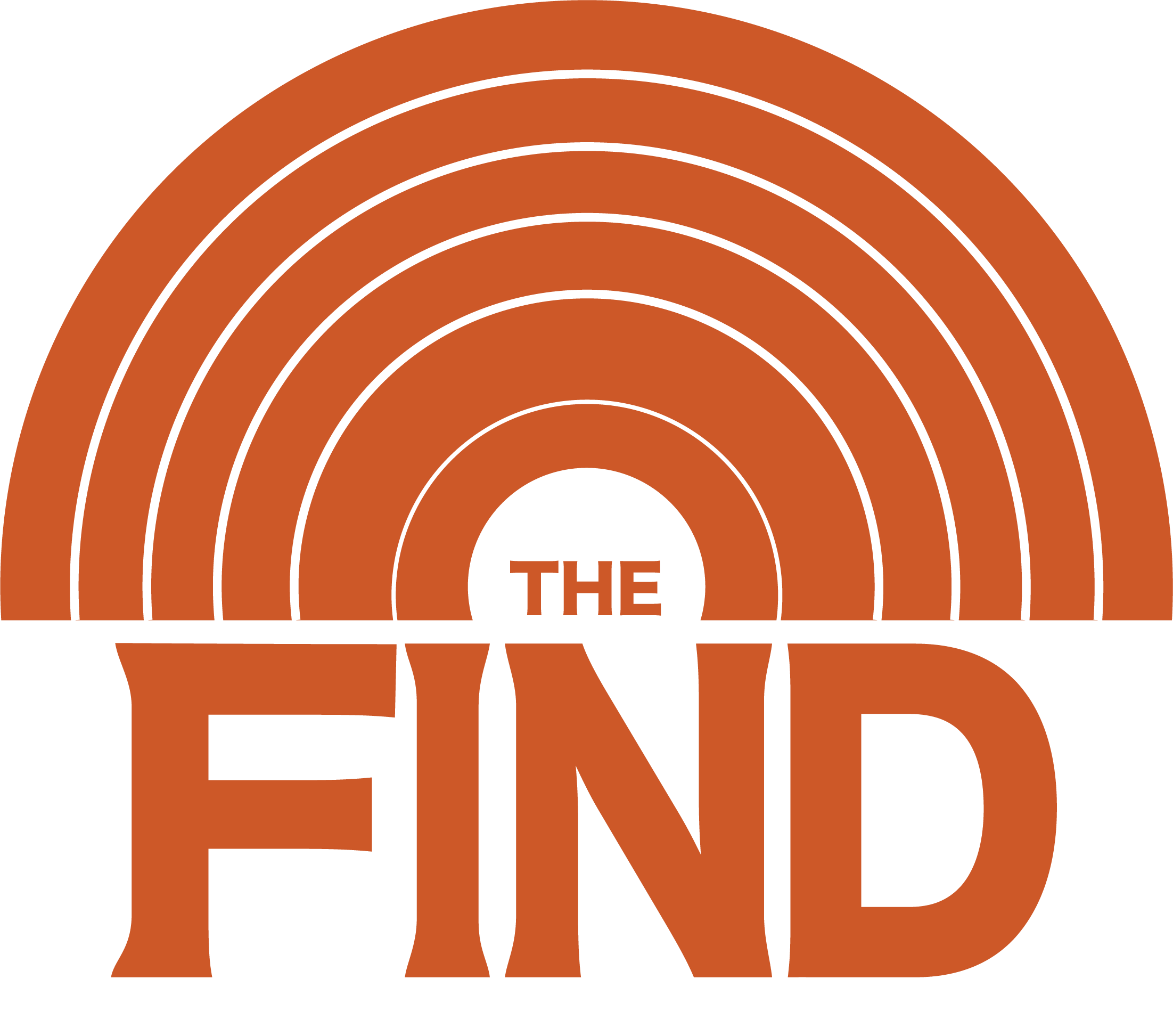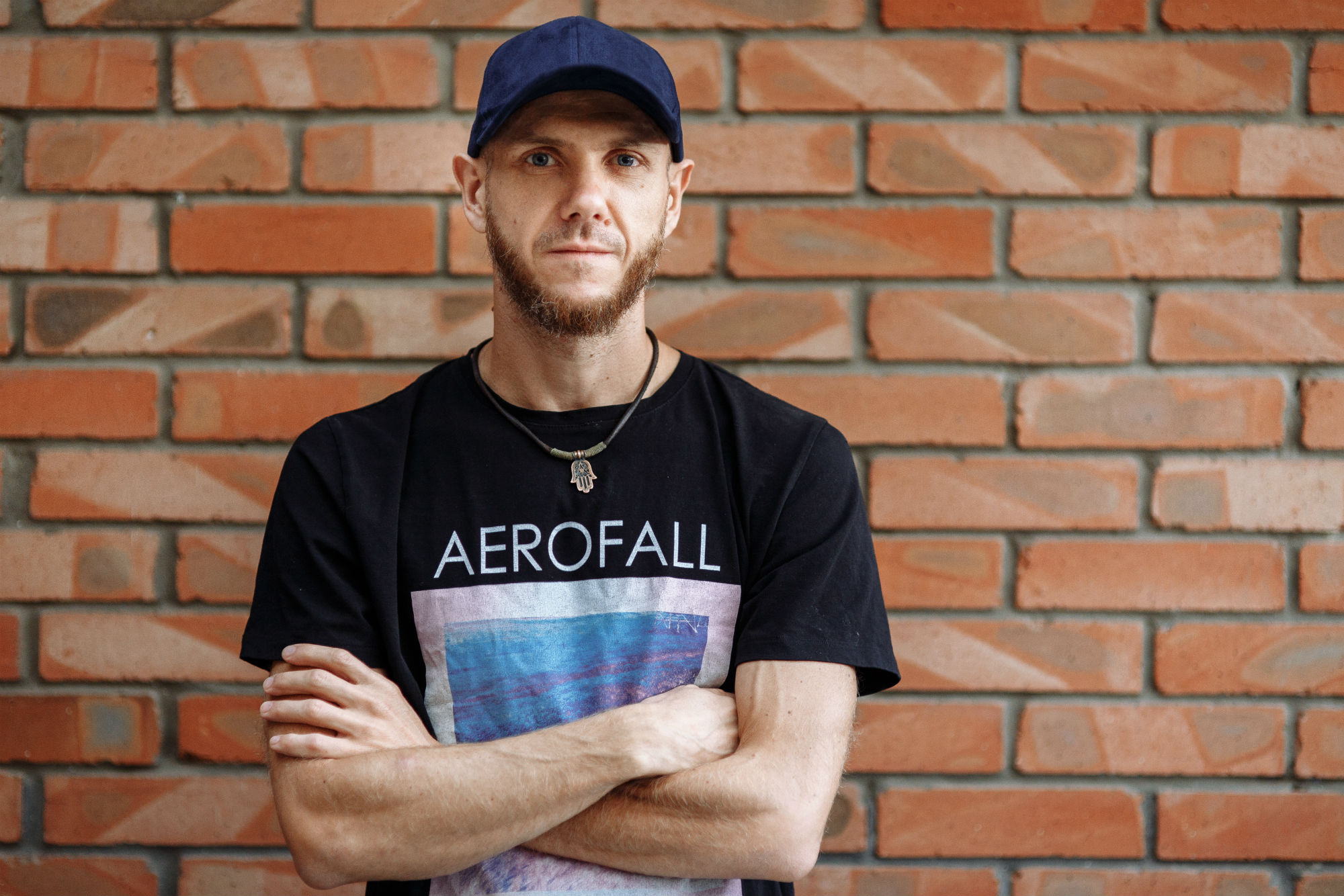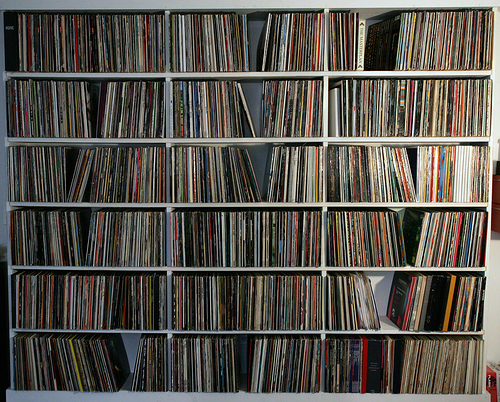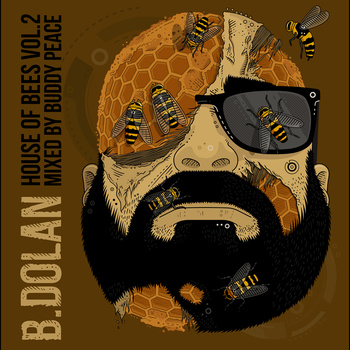Modular Minded: Syntablism & ModBap – Kypski (Interview)
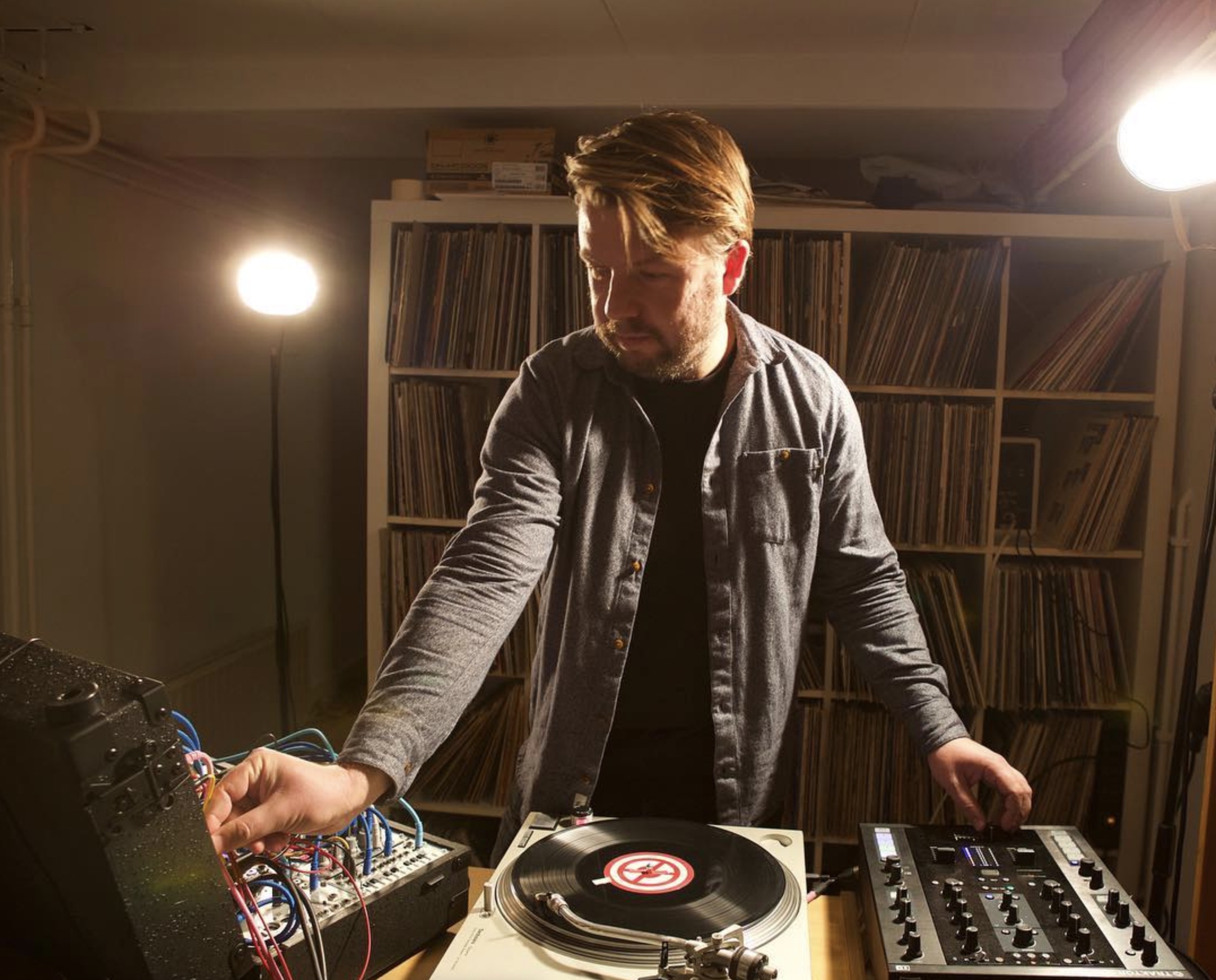
Modular synths are a thing right now. Have been for a while, and it doesn’t look like they’re going anywhere anytime soon either. Hip-hop, though, seems to have been mostly unaffected by this development so far. Enter turntablist Kypski and beatmaker Ali the Architect: two artists who are about to change all that, one patch at a time.
(Words: Martijn Kersten)
Ali The Architect (USA) does what he and his crew refer to as ModBap: modular-based production with a distinctively hip-hop feel and clear elements of boom bap. Kypski (The Netherlands) is a pioneer of Syntablism—applying turntablism as a means to play and control modular equipment. Kypski initially made a name for himself as battle-DJ (sixfold DMC Dutch DJ champion and DMC World finalist). He toured and released music as one-half of C-Mon & Kypski and was at the forefront of technical developments for turntablism once already with scratch tool the clocktave. And now, there’s syntablism.
Kypski, please take us back for a moment first. What came first for you: turntablism or beatmaking?
I started playing drums when I was eight years old and wanted to become a professional drummer. At the age of fifteen, I started scratching, too. Making beats probably about two years after that. The computer at that time was just capable of playing a loop at that point. And that was asking a lot of the machine already… We’re talking around 1990 here. If I wanted to make a beat out of that loop, we had to track it on a multitrack cassette recorder and sync that manually. With the pause button. That way, you could create variations in the arrangement.
I also started working towards the DJ-battles. They gave me some good press coverage, which in turn helped me get bookings. But at a certain point, I had to take a step back from them. I started to find creating music more important than battling. In a way, that’s something I’m dealing with again now with syntablism. The gear nerds are picking up on it, but I don’t want it to be restricted to being a ‘gear thing’. As I said, I’m first and foremost interested in creating music. And syntablism definitely leads to a distinct, unique sound in that. When you listen to tracks made using this technique, you can really hear the oscillators, filters and reverbs basically being scratched.
How do you think syntablism can evolve into something bigger than just a ‘gear thing’?
I really want to take syntablism and my music beyond the niche of people who are heavily into hip-hop or into hardware. I think the key to that is a strong stage production. Think of live musicianship and an elaborate visual plan. Maybe with some added musicians, in a unique and instantly recognizable setting. Eventually, musically it is going to be a bit less abstract.
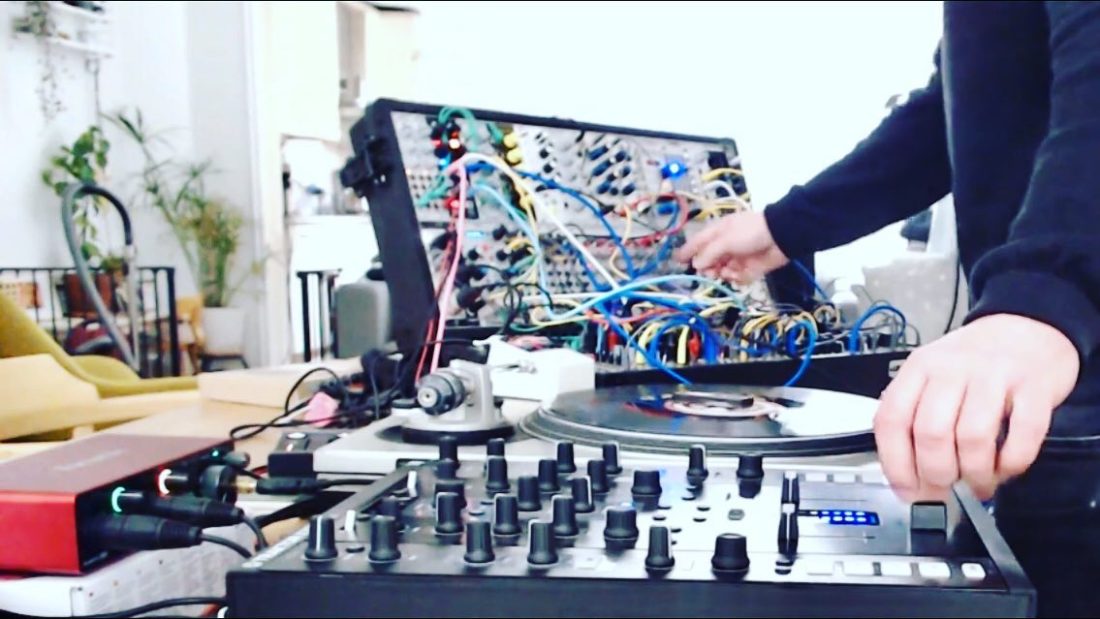
From a technical perspective: the technique comes from basically the most stripped-down setup possible: two turntables and a two-channel mixer with a crossfader. And now you’re way over on the other side: a modular system!
Yeah. I started with modular because I realized you can connect it to the turntable and crossfader in a very direct way. When I started researching that, I found out that not only the things I had in mind were actually possible – there was an almost endless world of possibilities behind that!
I had gotten a bit tired of sampling, because of the problems it brings when you want to release music. My initial idea was to go to synth studio Sonic Traffic in Utrecht, record sounds there, and to use those to create new music. But then I started discovering syntablism. Using that technique, I don’t have to import audio files onto my laptop anymore, just so I can then further work with them in Serato or Traktor. I have those sounds under control with my turntable before they are ever sampled or recorded! To me, that was pretty mind-blowing.
You mentioned the “endless possibilities” you encountered when you got into modular. That’s a recurring term when people discuss modular synths: “endless.”
It’s mostly endless if you don’t have a plan. There are so many rack modules out… If you start buying them and you don’t have a set idea of what exactly it is you want your system to do, you could be knee-deep in debt in no time. Only because you’ve been buying too much. Then it’s indeed endless and you should really ask yourself if you should get into it. [Laughs]
“‘Aaaah Fresh’ from Fab 5 Freddy’s “Change The Beat” is a vocoder sound. A synth sound. So if that’s the most-used scratch sound ever, then how crazy is it if the turntable becomes part of the synthesizer?!”
Do you have any sampler modules in your rack right now?
No. That’s just less interesting to me right now. I have one module, Pico Drums, that can play back some drum loops. But if I start scratching samples, that just puts me right back to what I was doing twenty years ago. For me, it’s really about scratching the control voltages and creating all-new things.
Think of Fab 5 Freddy’s “Change the Beat” from 1982. The “Aaaaah Fresh” sound—arguably the most popular scratch sound in history—is from that record. That’s a vocoder sound. A synth sound. So if that’s the most-used scratch sound, then how crazy is it if the turntable becomes part of the synthesizer?! You can then control more parameters than just pitch. Because that’s basically what a turntable does: manipulating pitch. Okay, and there’s the crossfader, which is basically a mute button. With syntablism, you can connect the turntable and crossfader to any parameter. That thought really freaked me out.
Hip-hop has had an interesting relationship with more electronic, synthier sound. Almost since the beginning. I remember interviews with people who were around for those early-stage parties in the Bronx. Saying they were sort of disappointed with Bambaataa’s “Planet Rock” single. Because it didn’t have the sound of the breaks that they associated him and the Zulu Nation DJ’s with most. Later on, a lot of people also leaned more towards an organic, more sample-based sound. What’s your take on that?
Hip-hop has always moved with the technical development of the times. In the nineties, and right before, sampling became really big. And it really defined the sound at that moment. But I was always a fan of, for instance, the electro tunes that came before that too. “Al-Naafiysh” by Hashim, stuff like that. I think it’s always been a combination of breaks—or other samples—on the one hand, and drum machines on the other. Electronic influences have always been an important part of that for me. And it still is.
And I’m curious to see what the future holds for syntablism. For me personally, I’m mostly interested in using it to produce music and to play it as a musical instrument in live-settings. And that’s challenging. I’m sure it’s going to keep me busy for years to come… For starters, there’s this single called “Rototom” now. And in September I’m releasing an EP also featuring the work I recently did with Ali The Architect on it.
How did the two of you meet?
Ali the Architect played Uncloud Festival in Utrecht. So Allert Aalders, co-founder of the local synth studio Sonar Traffic, sent me an invite for a workshop. A private session type of thing they were doing the day before his show. So I checked out some of his music and realized it is really dope. So we jammed, talked, and went for dinner. We had a good time and we both realized that while we’re not exactly doing the same thing, there is definitely a huge overlap. Look, it’s a fairly logical combination when you have a beatmaker and a turntablist creating sounds together, right? Just for us, it happened to be via modular synths.
